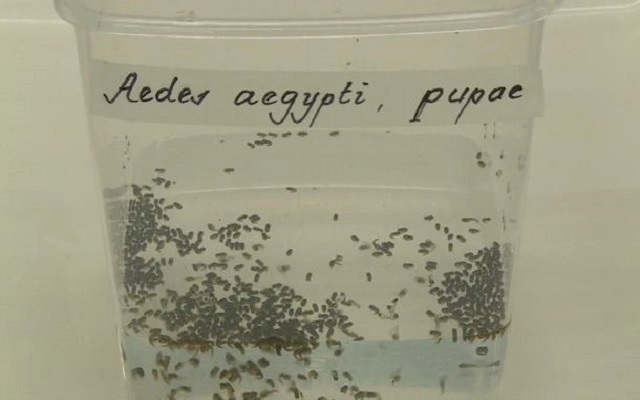The International Atomic Energy Agency (IAEA) is providing nuclear-related technology to countries affected by the Zika virus in Latin America and the Caribbean.
After twelve years of research at IAEA laboratories, a pest control technique that uses radiation to sterilize male insects is being transferred to the region where it will be integrated in national mosquito control programmes and further developed.
The method is known as the sterile insect technique, or SIT for short. It was first implemented in the 1950s and is now used in around 25 countries, mainly to tackle pests such as moths, fruit flies and tsetse flies.
SOUNDBITE (English) Marc Vreysen, Head FAO / IAEA Insect Pest Control Laboratory:
“Sterile Insect Technique (SIT) is not a new technology; it was conceived in the 1930s in the US by an American scientist and is actually a very, very simple principle. What you do is you bring the insect that you would like to control into the laboratory. You rear it in very, very large numbers, you take the male sex, you sterilize it with ionizing radiation, be it gamma- or x-rays, and you release those sterile males in the target area. What’s going to happen is that the sterile males are going to seek out the virgin females, they are going to mate, but there’s going to be no offspring. So, there’s going to be reduced population replacement and you will see that after a while the target population is going to go down.”
At the IAEA’s Insect Pest Control Laboratory in Seibersdorf, south of Vienna, Austria, entomologists have developed techniques for the mass-rearing, feeding and sterilizing of mosquitoes.
The laboratory, which is operated under the IAEA’s partnership with the UN’s Food and Agriculture Organization (FAO), is home to over one hundred thousand mosquitoes of three different species.
Currently, special attention is being given to the species responsible for spreading the Zika virus, which is known as Aedes aegypti.
SOUNDBITE (English) Marc Vreysen, Head FAO / IAEA Insect Pest Control Laboratory:
“Is it a tool that can be used to tackle the current Zika outbreak? We believe it is because what we have seen in the past is that Aedes aegypti control with conventional control tools has not been very successful. So we consider this as one additional, new tool that could be used to integrate with the conventional methods in order to try to reduce these mosquito populations, and in such a way try to reduce the transmission of Zika.”
For SIT to work, millions of sterile male insects need to be released into the wild over many months.
Gradually, the sterilized males start to outnumber the fertile wild ones and populations decline because mating with these males produces no offspring.
SOUNDBITE (English) Jeremie Gilles, Medical Entomologist, leader of the Human Disease Vector group of the IPCL:
“Now, we are ready to go into the field and we still have to work on certain compartments such as the sexing to eliminate the female, but also the release methods.”
The IAEA, together with its international partners, FAO, WHO and The Pan-American Health Organization – recently brought scientists from around the world to a meeting in Brazil to review the potential of this method to tackle mosquitoes.
The experts agreed that SIT is a safe, efficient and environmentally-friendly way to control these pests and fight the diseases they transmit, such as Zika and dengue fever.


